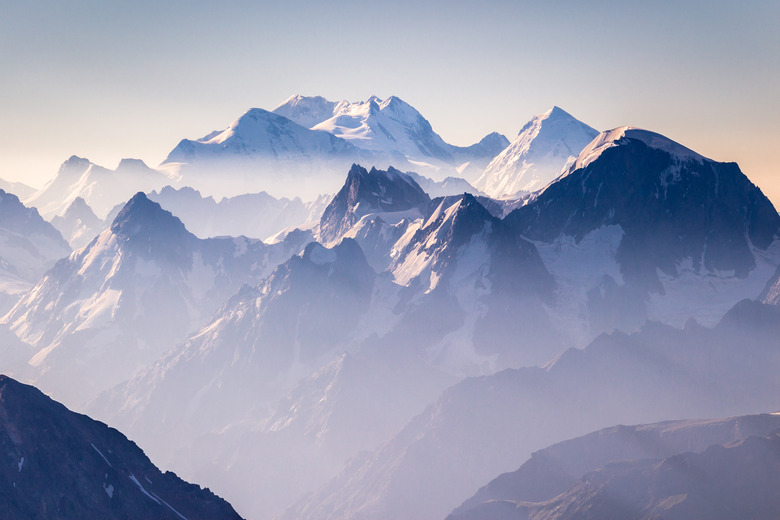How Do Mountains Affect Precipitation?
Precipitation is moisture falling to the ground in the form of rain, snow or ice. Mountains have two major effects called the orographic effect, which causes clouds and precipitation to form on one side of the mountain, and the rain shadow effect, which is a drier area on the opposite side of the mountain.
Cloud Formation
Cloud Formation
Mountains pose a significant obstacle to stable air flow. As air approaches the mountain it is forced upwards. At higher altitudes, the temperatures drop, condensing water vapor. This process results in the formation of clouds. Mountains may also restrict or slow down air flow. This restriction may also result in lifting air to high altitudes and creating clouds prior to the air reaching the slopes of the mountain.
Orographic Effect
Orographic Effect
As the the air is forced higher by the mountain, the clouds that were formed eventually release water in the form of precipitation. This so-called orographic effect occurs because the clouds' ability to hold moisture lessens as temperatures drop. The higher the mountain, the lower the temperatures at its peak. This forces the clouds to release the precipitation in the form of thunderstorms in the summer and severe snowstorms in the winter. The orographic effect occurs on the windward side — the side that faces the wind.
Rain Shadow
Rain Shadow
The leeward side of the mountain typically has a "rain shadow." The rain-shadow side has significantly less rainfall than the windward side. This is due to the orographic effect, which has basically squeezed out the moisture from the air as it traveled over the peak of the mountain. The resulting air sinks, making it warmer and drier with less precipitation.
Resulting Effects
Resulting Effects
The orographic effect and the resulting rain shadow result in two very different climates on opposite sides of the same mountain. On the windward side, the mountain receives generous rainfall and has mild climates. The leeward side of the mountain only receives sporadic rainfall, which may result in desertlike climates in some circumstances.
Cite This Article
MLA
Carpenter, Michael E. "How Do Mountains Affect Precipitation?" sciencing.com, https://www.sciencing.com/do-mountains-affect-precipitation-8691099/. 13 March 2018.
APA
Carpenter, Michael E. (2018, March 13). How Do Mountains Affect Precipitation?. sciencing.com. Retrieved from https://www.sciencing.com/do-mountains-affect-precipitation-8691099/
Chicago
Carpenter, Michael E. How Do Mountains Affect Precipitation? last modified March 24, 2022. https://www.sciencing.com/do-mountains-affect-precipitation-8691099/
